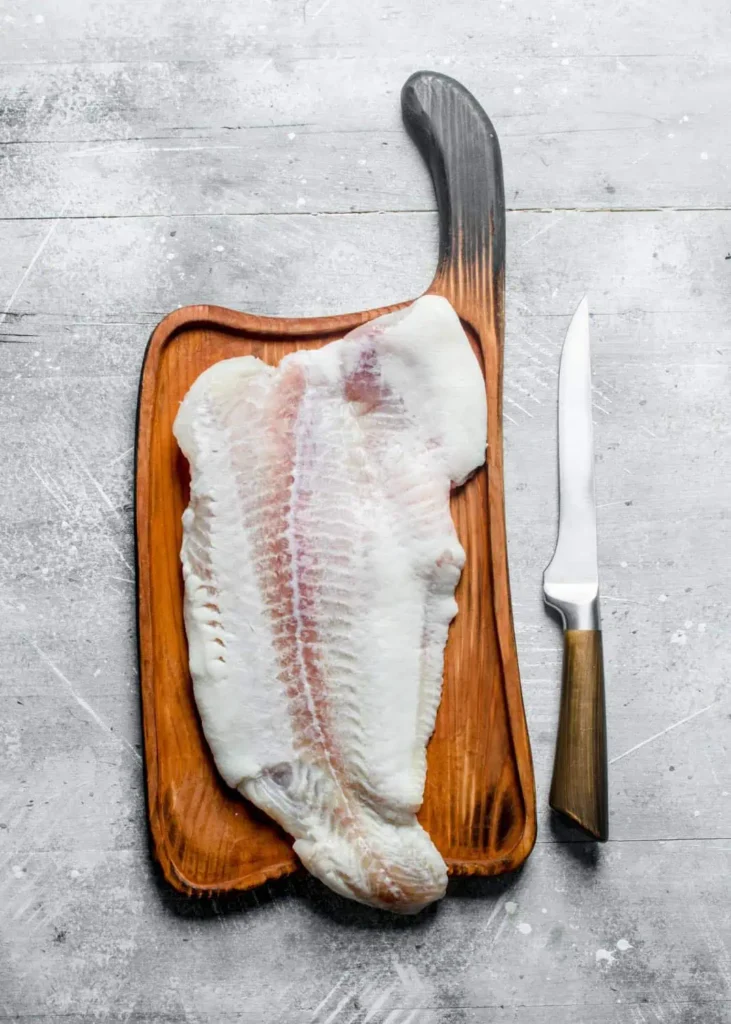When it comes to preparing branzino, one of the most common questions that home cooks and seafood enthusiasts ask is, “Do you remove the bones from branzino?” The short answer is yes, you typically want to remove the bones from branzino for the best dining experience. However, there’s much more to this process than a simple yes or no. Whether you’re a beginner in the kitchen or a seasoned chef, understanding how to properly debone branzino can elevate your cooking skills and ensure a safe, enjoyable meal for everyone.
In this comprehensive guide, we’ll explore everything you need to know about removing bones from branzino. From understanding the anatomy of the fish to step-by-step instructions, common mistakes to avoid, and even serving suggestions, this article will leave no stone unturned. By the end, you’ll feel confident in your ability to handle this delicate Mediterranean fish like a pro.
What Is Branzino?
Before diving into the specifics of bone removal, let’s take a moment to understand what branzino is. Branzino, also known as European sea bass, is a mild, flaky white fish that’s prized for its delicate flavor and versatility in the kitchen. It’s a staple in Mediterranean cuisine and is often served whole, grilled, baked, or pan-seared.
Branzino is relatively small, typically weighing between 1 and 2 pounds, making it an ideal choice for individual servings or small gatherings. Its bone structure is straightforward, which makes it easier to work with compared to other fish. However, like any fish, it does contain bones that need to be removed for a safe and enjoyable dining experience.
Why Remove Bones from Branzino?
If you’re wondering whether you should remove the bones from branzino, the answer depends on how you plan to serve it. While some people enjoy the traditional experience of eating a whole fish and picking out the bones as they go, most diners prefer a bone-free meal. Here are some key reasons why you should remove the bones:
- Safety: Fish bones can be a choking hazard, especially for children and elderly individuals. Removing them ensures a safer dining experience.
- Convenience: Deboned fish is easier to eat, allowing diners to focus on the flavors rather than navigating around bones.
- Presentation: A perfectly deboned branzino looks more professional and appealing, especially when served at a dinner party or special occasion.
- Texture: Bones can interfere with the smooth, flaky texture of the fish, so removing them enhances the overall eating experience.
Understanding Branzino’s Bone Structure
To effectively remove bones from branzino, it’s important to understand its anatomy. Branzino has a relatively simple bone structure, which includes:
- Central Backbone: This runs from the head to the tail and is the largest bone in the fish.
- Pin Bones: These are small, thin bones that run along the sides of the fish. They are the most common bones to remove.
- Rib Bones: These are attached to the backbone and extend outward into the flesh.
- Fin Bones: These are located near the fins and are usually removed during the filleting process.
Knowing where these bones are located will help you work more efficiently and ensure that no bones are left behind.
Tools You’ll Need to Remove Bones from Branzino
Before you start, make sure you have the right tools on hand. Having the proper equipment will make the process easier and more precise. Here’s what you’ll need:
Essential Tools:
- Sharp Filleting Knife: A flexible, sharp knife is crucial for making clean cuts and separating the flesh from the bones.
- Fish Bone Tweezers: These are used to remove pin bones with precision.
- Cutting Board: A sturdy, non-slip cutting board provides a stable surface for working with the fish.
- Paper Towels: These help keep your hands and workspace clean.
- Scaling Tool: If the fish hasn’t been scaled, you’ll need a tool to remove the scales.
Optional Tools:
- Kitchen Scissors: Useful for trimming fins and other small parts.
- Magnifying Glass: Helps you spot tiny pin bones that might be hard to see.
- White Plate: Placing the fish on a white plate can make it easier to spot any remaining bones.

Step-by-Step Guide to Removing Bones from Branzino
Now that you’re familiar with the tools and anatomy, let’s dive into the step-by-step process of removing bones from branzino. Whether you’re working with a whole fish or fillets, these instructions will guide you through the process.
1. Prepare Your Workspace
- Start by cleaning and sanitizing your workspace to ensure food safety.
- Lay out all your tools so they’re within easy reach.
- Place the fish on a cutting board and pat it dry with paper towels.
2. Scale the Fish (If Necessary)
- If the fish hasn’t been scaled, use a scaling tool to remove the scales. Work from the tail to the head, using short, firm strokes.
- Rinse the fish under cold water to remove any loose scales, then pat it dry.
3. Make the Initial Cuts
- Using a sharp filleting knife, make a cut behind the gills and down to the backbone. This will separate the head from the body.
- Make a second cut along the belly to open up the fish.
4. Remove the Fillets
- Starting at the head, run your knife along the backbone, keeping the blade as close to the bones as possible.
- Gently lift the fillet away from the bones as you cut, working your way toward the tail.
- Repeat on the other side to remove the second fillet.
5. Remove the Pin Bones
- Lay the fillets skin-side down on the cutting board.
- Run your fingers along the flesh to locate the pin bones. They will feel like small, hard bumps.
- Use fish bone tweezers to carefully pull out each pin bone. Pull in the direction of the bone to avoid tearing the flesh.
6. Inspect for Remaining Bones
- Once you’ve removed the pin bones, inspect the fillets visually and by touch to ensure no bones remain.
- If you find any additional bones, remove them with tweezers.
Common Mistakes to Avoid
Even with the best intentions, it’s easy to make mistakes when removing bones from branzino. Here are some common pitfalls and how to avoid them:
- Using a Dull Knife: A dull knife can tear the flesh and make it harder to remove the bones cleanly. Always use a sharp filleting knife.
- Rushing the Process: Bone removal requires patience and attention to detail. Take your time to ensure all bones are removed.
- Skipping the Pin Bone Check: Even if you think you’ve removed all the bones, always double-check by running your fingers over the flesh.
- Improper Cutting Angle: Cutting at the wrong angle can result in wasted meat or missed bones. Follow the natural contours of the fish.
- Poor Lighting: Working in dim lighting can make it difficult to see small bones. Ensure your workspace is well-lit.
Should You Remove Bones Before or After Cooking?
One of the most debated questions is whether to remove bones from branzino before or after cooking. The answer depends on your personal preference and the dish you’re preparing.
Removing Bones Before Cooking:
- Pros: Easier to serve, better presentation, and no need for diners to deal with bones.
- Cons: Requires more time and effort upfront.
Removing Bones After Cooking:
- Pros: The flesh is softer and easier to separate from the bones.
- Cons: Can be messier and less precise, especially if the fish is overcooked.
For most recipes, it’s recommended to remove the bones before cooking, as this ensures a cleaner presentation and a more enjoyable dining experience.

How to Serve Deboned Branzino
Once you’ve successfully removed the bones from branzino, it’s time to think about how to serve it. Here are some popular serving suggestions:
Classic Preparations:
- Grilled Branzino: Season the fish with olive oil, lemon, and herbs, then grill it to perfection.
- Baked Branzino: Stuff the fish with garlic, rosemary, and lemon slices, then bake it in the oven.
- Pan-Seared Fillets: Cook the fillets in a hot skillet with butter and fresh herbs for a crispy, golden crust.
- Steamed Branzino: Steam the fish with ginger, scallions, and soy sauce for a light, flavorful dish.
Modern Interpretations:
- Branzino Tacos: Use the fillets as a filling for tacos, paired with fresh salsa and avocado.
- Branzino Ceviche: Marinate the fish in lime juice, cilantro, and chili for a refreshing appetizer.
- Mediterranean Branzino Bowl: Serve the fish over a bed of quinoa, roasted vegetables, and tzatziki sauce.
FAQs About Removing Bones from Branzino
Can You Eat Branzino Bones?
While branzino bones are technically edible when cooked, they are not recommended for consumption due to their sharpness and potential choking hazard.
How Many Bones Does Branzino Have?
A typical branzino contains approximately 20-30 pin bones, in addition to the central backbone and rib bones.
Is It Difficult to Remove Bones from Branzino?
With the right tools and techniques, removing bones from branzino is relatively straightforward. It may take some practice, but it’s a skill that anyone can learn.
Can You Ask a Fishmonger to Remove the Bones?
Yes, most fishmongers will be happy to remove the bones for you if you ask. However, learning to do it yourself can save you money and give you more control over the process.
Final Thoughts
Learning how to remove bones from branzino is an essential skill for anyone who enjoys cooking and eating fish. While it may seem intimidating at first, with the right tools, techniques, and a bit of practice, you’ll be able to debone branzino like a pro. Not only will this enhance the presentation and flavor of your dishes, but it will also ensure a safe and enjoyable dining experience for your guests.
Whether you’re preparing branzino for a casual weeknight dinner or a special occasion, taking the time to remove the bones properly will elevate your dish to the next level. So grab your tools, follow this guide, and get ready to impress your family and friends with perfectly deboned branzino!

